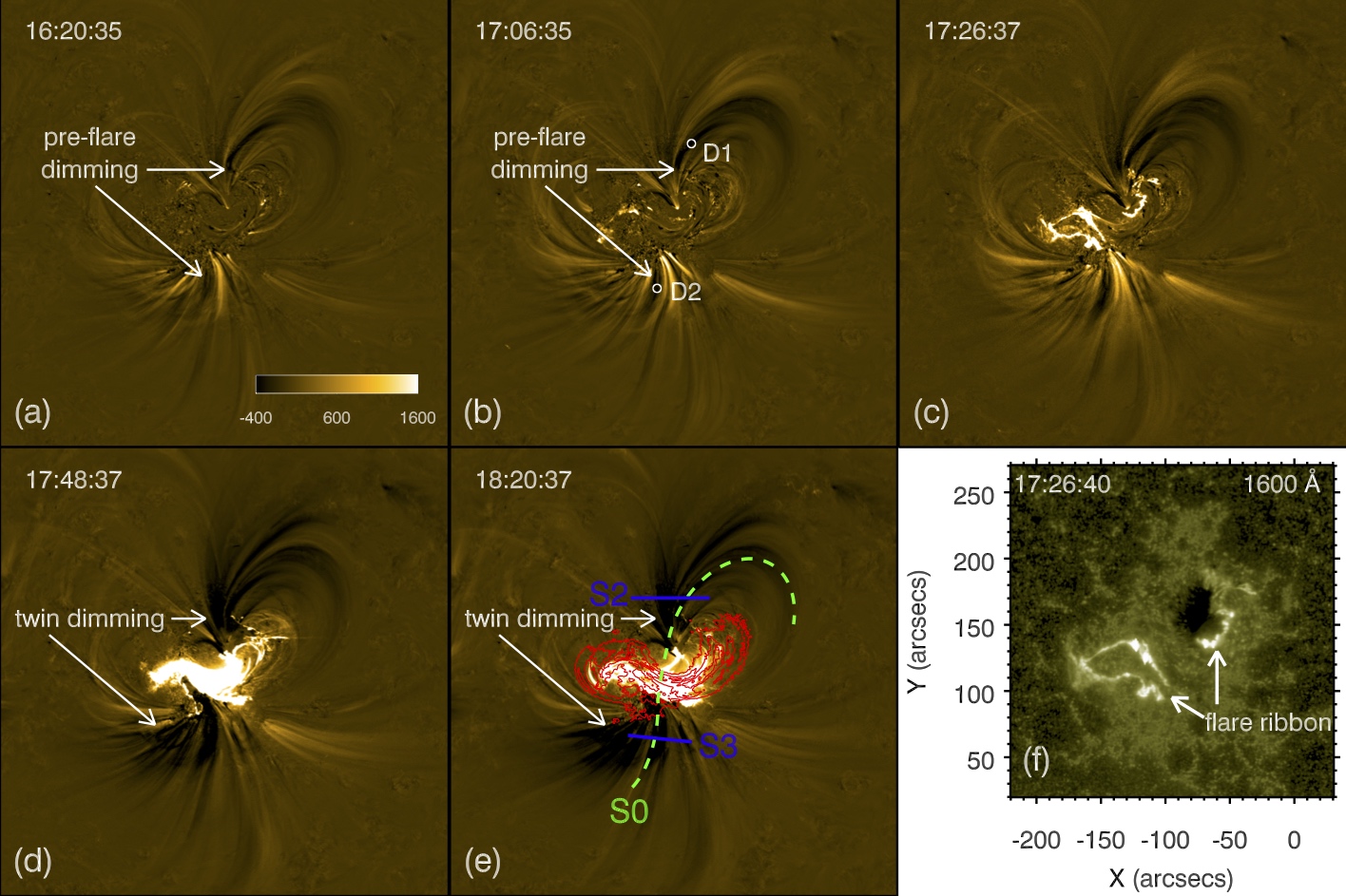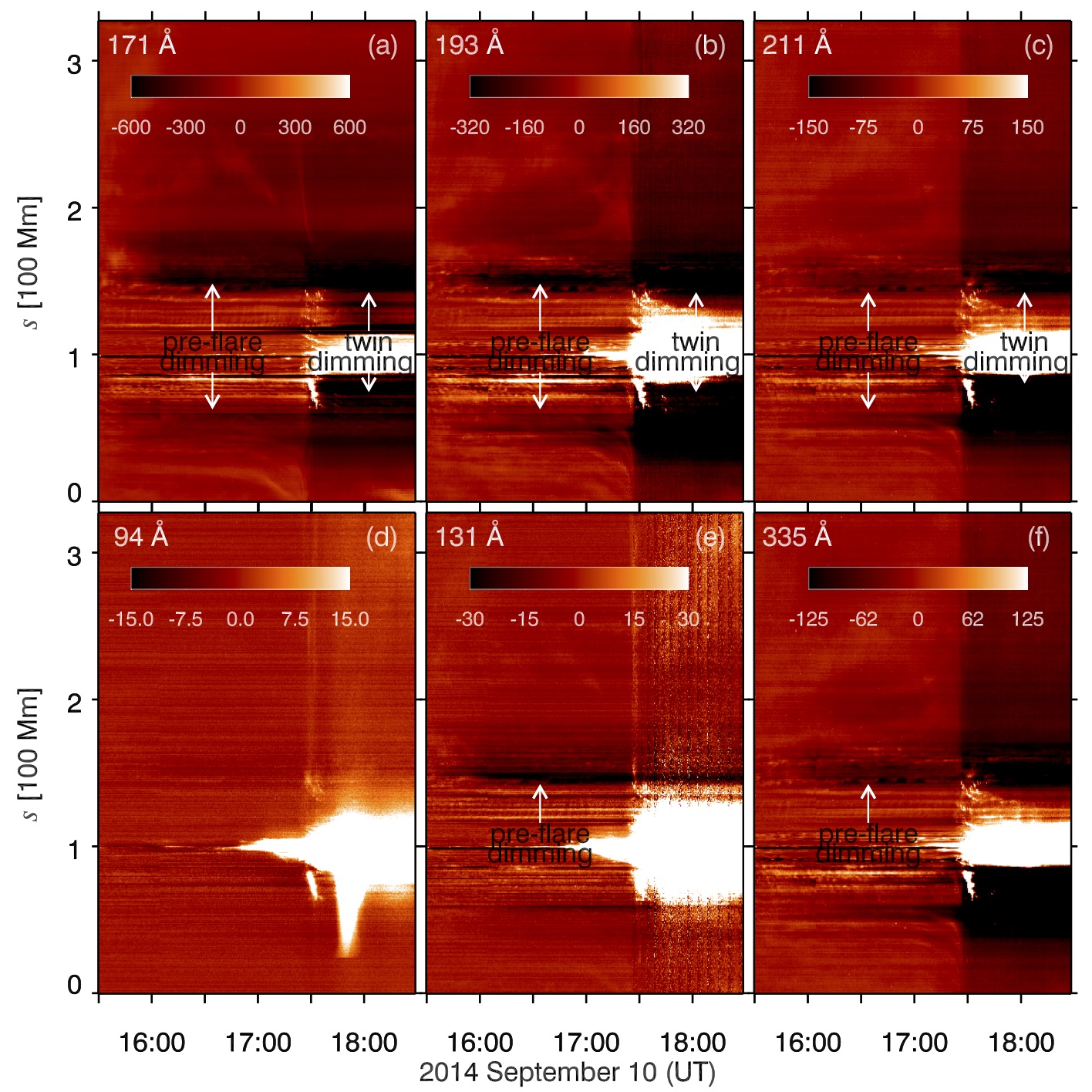Coronal dimming and EUV wave are hot topics in solar physics. Recently, solar scientists Qingmin Zhang, Haisheng Ji, and Yingna Su in Purple Mountain Observatory discovered coronal dimmings before the impulsive phase of a flare. The results have been published on the famous magazine Astronomy & Astrophysics with title “Pre-flare coronal dimmings.” The link of the article: http://www.aanda.org/articles/aa/abs/2017/02/aa29477-16/aa29477-16.html Coronal dimmings are one of the large-scale solar activities, which are associated with coronal mass ejections (CMEs). Coronal dimming was first discovered by the EIT telescope aboard SOHO, a NASA’s spacecraft launched in 1995. When coronal dimmings take place, the EUV and SXR emissions of the coronal decrease to a large extent, generating a transient coronal hole that extends tens to hundreds of Mm (1 Mm=106 m). In most cases, coronal dimmings appear in the impulsive and decay phases of solar flares, lasting for several hours and even a couple of days. It is generally accepted that the nature of coronal dimmings is density reduction after the local coronal plasmas are ejected. Although the previous investigations (observations and numerical simulations) on coronal dimmings are abundant, pre-flare dimmings have never been noticed. Using the multiwavelength observational data of the SDO spacecraft, the scientists studied the solar eruption on 2014 September 10 in active region 12158. In this event, a magnetic flux rope erupted due to the loss of equilibrium, generating an X1.6-class flare and a fast halo CME. It is found that about 96 minutes before the impulsive phase of the flare, narrow coronal dimmings (8-9 Mm in width) appeared near the north and south footpoints of the flux rope. As time went on, the pre-flare dimmings extended slowly with their intensity decreasing. During the impulsive phase of the flare (i.e., the impulsive acceleration phase of CME), the coronal dimmings extended rapidly like a pair of fans and the intensities decreased significantly, lasting for more than one hour. The authors concluded that pre-flare dimmings could be explained by density depletion as a result of the gradual expansion of the coronal loop system surrounding the flux rope during the slow rise of the flux rope. Pre-flare dimmings are most striking in 171, 193, and 211 Å. The northern part of the pre-flare dimmings could also be recognized in 131 and 335 Å. The referee thought highly of the results. He/she said “Pre-flare dimming is a topic not before published on. These results came as a surprise to me.” and “It has important implications for the solar physics (flare, CME, and coronal dimming) communities as well as for space weather.” The research is funded by the projects from the NSFC and Jiangsu Province. 
Fig. 1. (a-e) base-difference images observed by SDO/AIA in 171 Å, showing the pre-flare and fan-like coronal dimmings. (f) SDO/AIA 1600 Å image showing the two ribbons of the flare. 
Fig. 2. Time-slice diagrams of S0 (dashed green line in Fig. 1(e)) in different wavelengths. The x-axis and y-axis represent time and distance along S0. |
